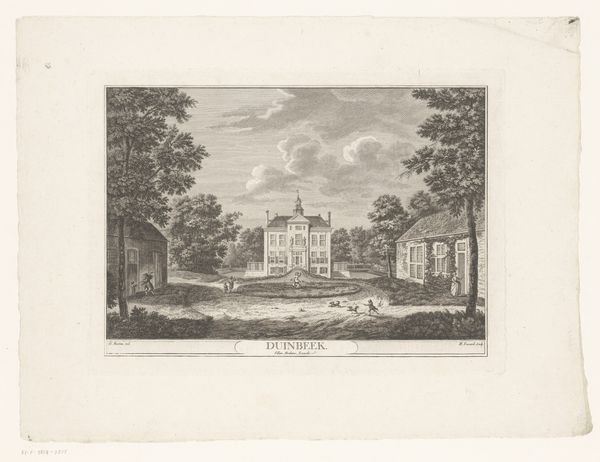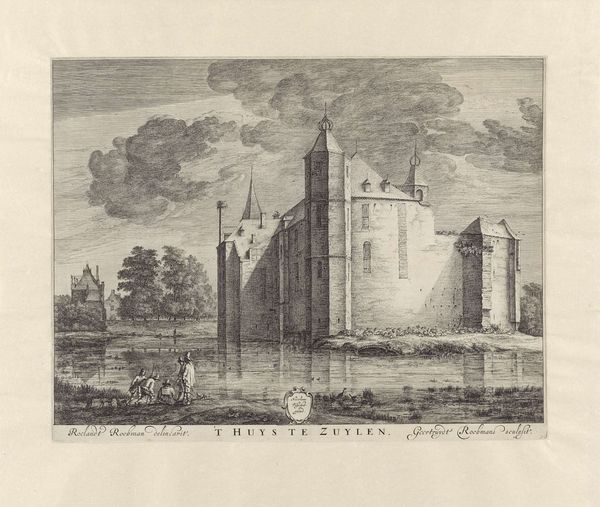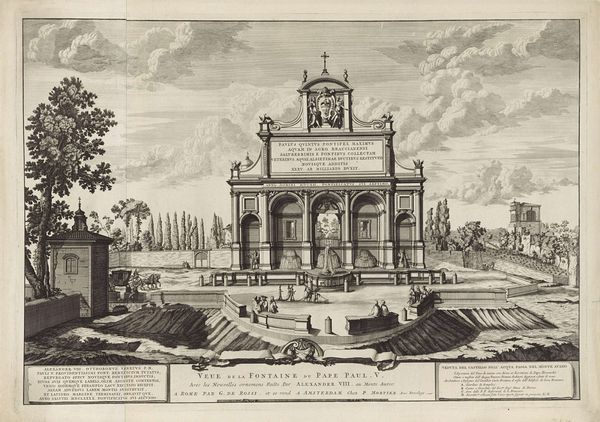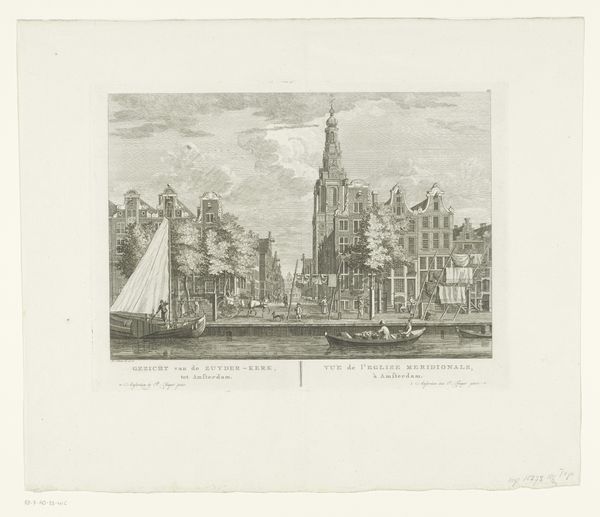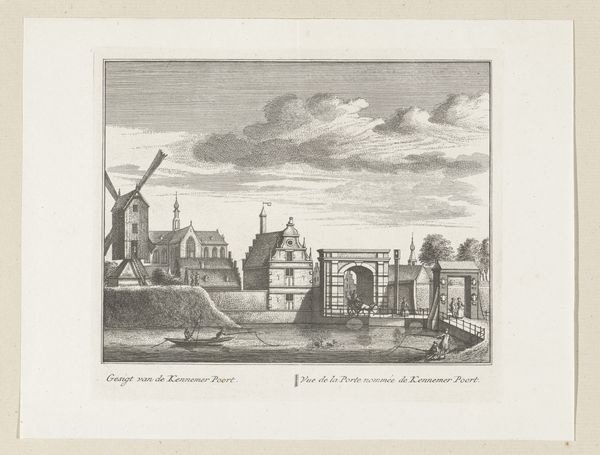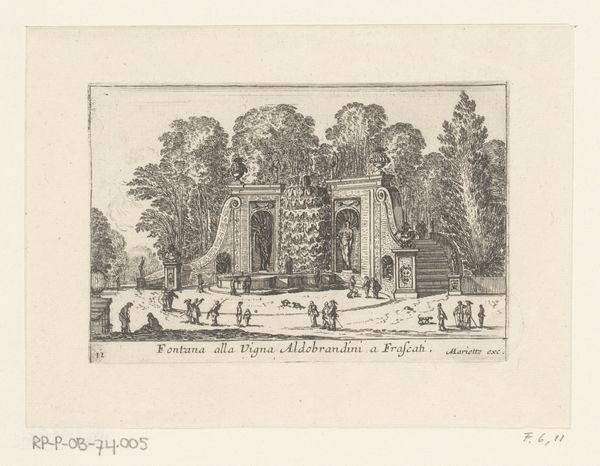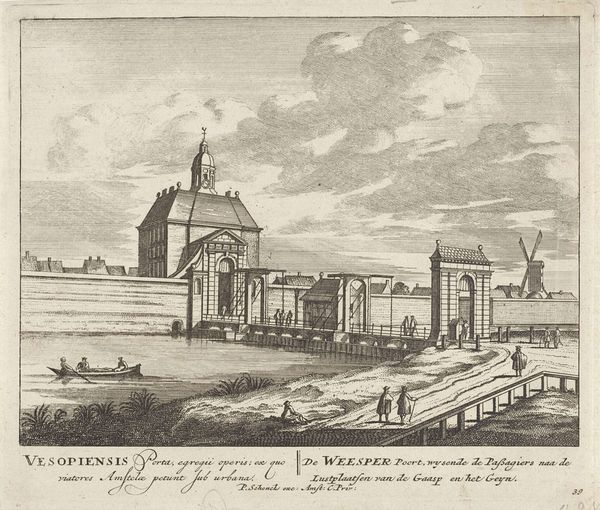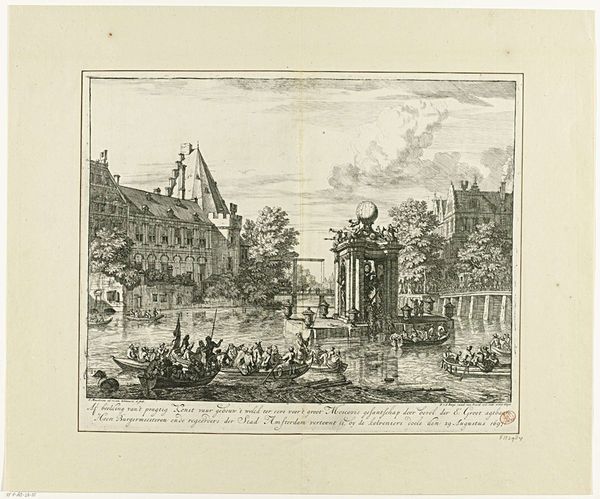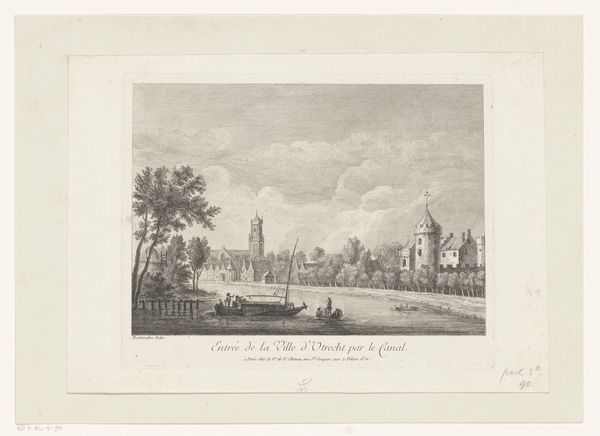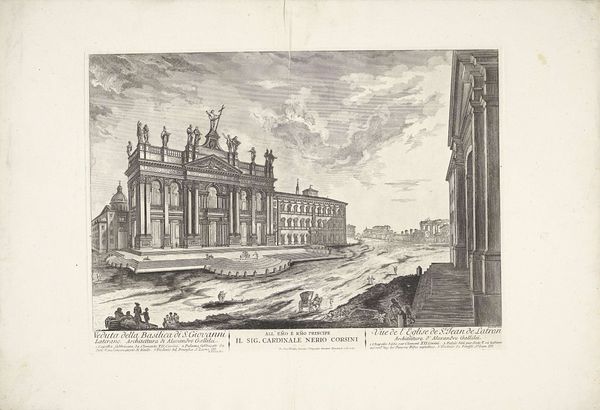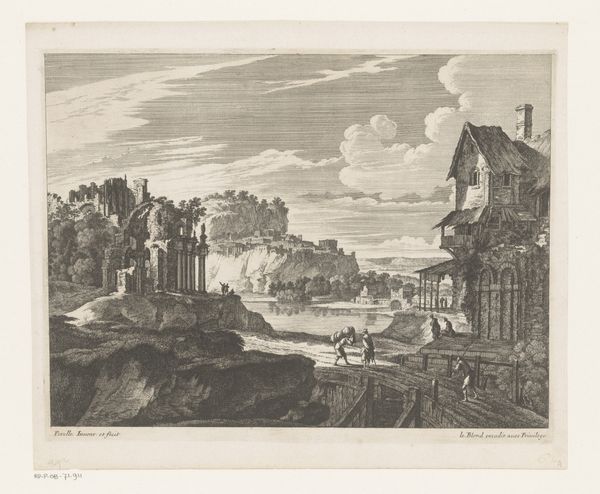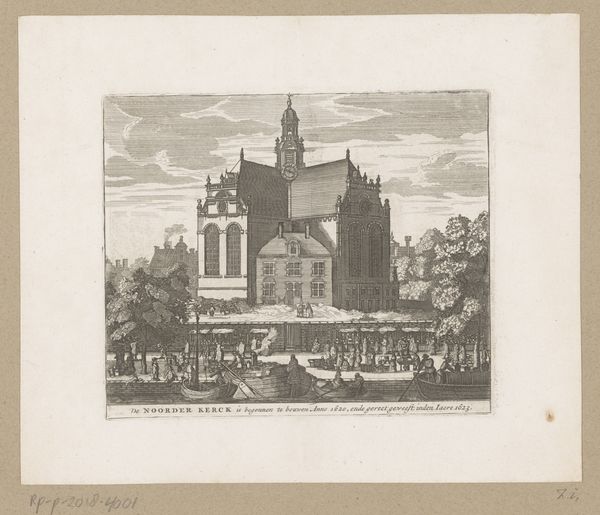
Dimensions: height 350 mm, width 476 mm
Copyright: Rijks Museum: Open Domain
This print of the Chiesa di San Salvatore in Venice was produced by Fabio Berardi in the 18th century using etching and engraving techniques. Notice the precision of the lines, which capture the architectural details of the church and surrounding environment. Etching involves coating a metal plate with a waxy substance, then scratching an image into it with a needle, exposing the metal. The plate is then dipped in acid, which bites into the exposed lines, creating grooves. Engraving, on the other hand, requires carving lines directly into the metal plate using a tool called a burin. Both techniques require considerable skill and labor, revealing a sharp contrast between the intricacy of the image and the mechanical processes used to create it. The social context of this work reflects the rise of print culture and the demand for detailed architectural views during the 1700s. The work serves as a reminder of the artistic and industrial practices that enabled the distribution and appreciation of cultural landmarks, and the labor required to do so.
Comments
No comments
Be the first to comment and join the conversation on the ultimate creative platform.

